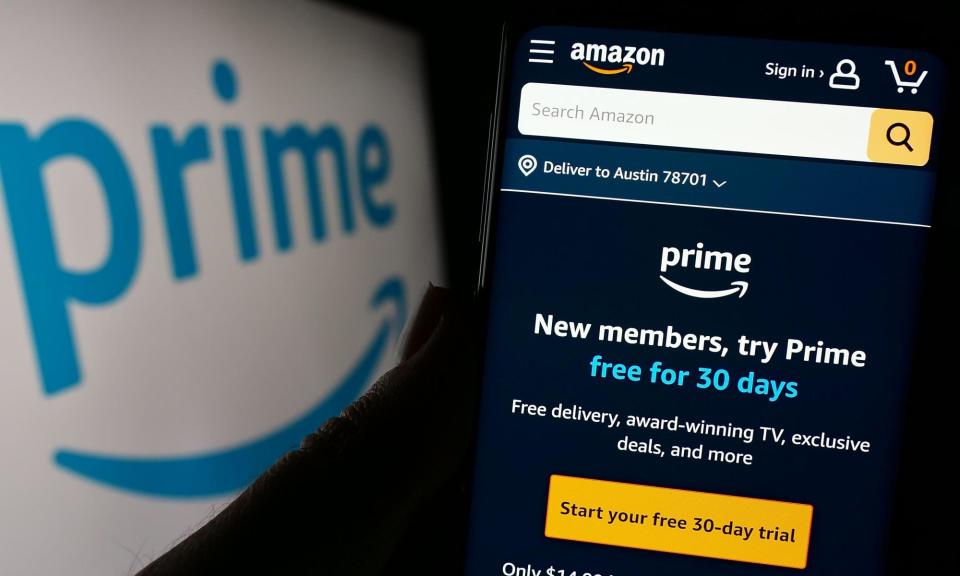Ever since I cancelled my Amazon Prime subscription I have been constantly nagged to sign up again when I check out. The latest pressure tactic is a full-screen display with the sign-up box highlighted, and a pre-ticked box authorising Amazon to use any gift card balance to pay for the subscription. I feel Amazon is trying to trick me into paying up.
SM, London
About 4.5 million people in the UK have, at some point, signed up to Amazon Prime by mistake, according to research last year by campaign group Which?. I’m one of them. The £95-a-year service offers, among other things, fast-tracked delivery and film and music streaming. Because it’s a healthy cash cow, with more than 200 million subscribers globally, the website prompts between basket and checkout are designed to capture as many customers as possible.
You had to navigate a full screen in which the most prominent script, in primary colours, offered next-day delivery and invited you to click a bright green button.
In slightly less eye-catching blue, Amazon claimed it was “giving you another week of Prime for just £0.99”. The white micro-print at the bottom of the page, advising that by clicking the bright button, you are signing up to a rolling £8.99-a-month subscription is easily overlooked by shoppers in a hurry to complete their order, as is the bashful blacked-out box that must be clicked to avoid signing up. For those who do avoid the pitfall, there’s no option to opt out of receiving future prompts to sign up when they make a purchase.
Many shoppers only realise they’ve subscribed when the monthly fee starts leaving their bank account. While sign-up is accomplished with the press of a key, cancellation is a fiddly process involving a Google search and at least four click-throughs.
Amazon, which claims the Which? findings were based on “incorrect assumptions”, tells me: “Customer transparency and trust are top priorities for us and, by design, we make it clear and simple for customers to both sign up for, or cancel, this membership.”
It’s illegal under the Consumer Contract Regulations for businesses to pre-tick opt-in boxes for purchases, but it’s up to regulators or the courts to take action.
“Firms are pushing the grey areas of the law to get away with aggressive, opaque sales,” says consumer expert Martyn James. “Amazon, for instance, could argue that, as a customer has a choice of two boxes to click, albeit one that is highlighted, it isn’t breaking the rules. The courts would undoubtedly take a dim view, but it needs a determined complainant to take the issue that far.”
There is, however, pressure from across the Atlantic. The US Federal Trade Commission has filed a lawsuit that accuses Amazon of using “manipulative, coercive or deceptive user-interface designs” to signing millions of consumers to its Prime service without their consent. The trial is due to start next June.
A failsafe way to avoid an unwitting contract is to take your business elsewhere, preferably to a struggling high street, but I know as well as anyone that it’s easier said than done.
Email [email protected]. Include an address and phone number. Submission and publication are subject to our terms and conditions





